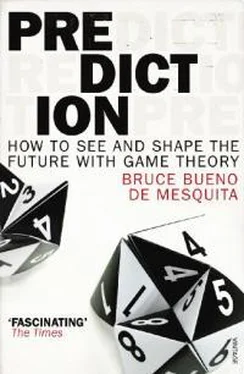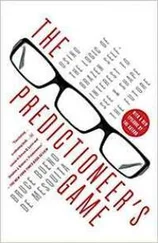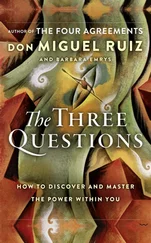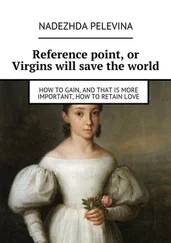What did my study find and why did it find it? The Rostenkowski study, as I now think of it, had a long list of players that included several members of Congress, Hillary Clinton herself, health care expert advisers from nursing homes, AARP, pharmaceutical companies, employers of all shapes and sizes, and so forth. Many issues were relatively difficult to resolve within the model’s own logic, taking many rounds of negotiation, posturing, and information exchanges before settling on what looked like a stable outcome—that is, an outcome that could get through the House and Senate. It was evident that more compromise was needed than some key players were prepared to accept. It was also evident that the study had to involve at least two (and possibly as many as four) distinct phases.
The first phase, common in many analyses of legislative decisions, focused on the period of lobbying and jockeying for position. In this phase, all of the players with an interest in shaping the outcome are part of the analysis. That includes many stakeholders who would not have a place at the table when it came time for the House and Senate to vote and for the president to sign or veto whatever they sent up to him. Organizations like Blue Cross–Blue Shield or the AMA that were utterly opposed to the Clinton plan, or some labor union leaders and local government interests that were strongly in favor of the plan, are included in the lobbying phase along with the decision makers. Then, when the lobbying game ends (according to the model’s rules), the analysis moves to the next phase. Because of the pulls and tugs during the lobbying period, many players’ positions will have shifted. They will have responded to offers of compromise or to coercion or to the anticipation of such pressures. So at the end of that first game, the decision makers move on to the next phase, but not with their original positions on individual health care issues intact. They move on at whatever position the model predicts they will hold when the lobbying game ends.
The next phase then pits just the decision makers against each other. Gone are labor union leaders, the AMA, the media, the Blues, and local and state governments, and gone is Hillary Rodham Clinton. Sure, she had influence in the lobbying phase, but she didn’t get to vote in Congress. From the model’s perspective, whatever whispers there might have been between her and President Clinton ended with the lobbying phase. He, and others, had ample opportunity in the first phase to succumb to, adjust to, or resist her arguments.
The second phase predicted the passage of a comprehensive bill in both the House and the Senate. It also predicted that the bill that would come before President Clinton was one he could easily have signed, although it would have been much altered from the legislation sought by Hillary Clinton. So there was little need in this case to do a further analysis to work out the negotiations between the House and Senate leadership over the exact contents of the proposed legislation, and there was no need to do a detailed study of the risks of veto and the prospects of overriding a veto. It just wasn’t an issue.
The numbers having been crunched, four results popped out of the analysis as being crucial to understanding where health care reform was headed. First, Hillary Clinton was an unusual stakeholder, not because she was First Lady, but because she showed the characteristics of someone who was content to fail while sticking to her principles. Despite pressure on her from every side, she was nearly immovable on each and every one of the issues I examined. This is a characteristic that is rarely seen in democratic politics (although many perceived this as the bargaining approach, really a bullying approach, used by George W. Bush). Sure, I had seen a rigid adherence to positions before in other studies I had done. The late Nigerian general Sani Abacha (and I do not mean to compare Hillary Clinton or George W. Bush to him on any substantive grounds—just bargaining style back then) was an important focus of many studies I did. He hardly ever shifted position, but then he didn’t have to. He got to dictate outcomes. Hillary Clinton barely shifted positions either, but, from a practical standpoint, she needed to. All the evidence suggests that her time in the U.S. Senate after her husband’s presidency made her a shrewd judge of when to flex some muscle and when to muster some flexibility. That should serve her well in the world now, but back then the model said she only knew about flexing muscle.
In the language of the times, Hillary Clinton had a tin ear when it came to politics. Fair enough. She had never run for office and had not been a politician. But her rigid willingness to go down in a seeming blaze of glory, but inevitably down nevertheless, hurt the chances of forging compromises with those who saw themselves excluded from the debate. This includes such important interest groups as the American Medical Association, much of the pharmaceutical industry, and others from whom even grudging support would have made selling health care reform much easier. Indeed, the analysis suggested that given the right response from the Clinton health care task force, the AMA was more flexible on many health care issues than was commonly perceived at the time. They could have been brought around to support a program that could have passed the House and Senate.
The second striking result was Bill Clinton’s bargaining style within the model’s logic. There are two ways to maneuver into a winning position. One is to persuade others to adopt your point of view. The other is to adopt theirs. Bill Clinton—in the model’s logic; I don’t know what he was actually doing behind closed doors—was the latter type. This was probably due to the modest degree of salience coupled with a fairly centrist, even slightly right position assigned to him on most health care issues by the expert panel I used to create the inputs for the model.
As the model saw things, President Clinton would sniff out where the strongest coalition was, and he would move close to it. He was like a person with a wet finger stuck in the wind to see which way the breeze is blowing. If Hillary Clinton’s principle at the time can be described as “Back what you believe in, come hell or high water,” Bill Clinton’s principle was “Win, no matter what constitutes winning.” With the benefit of hindsight, writing this a decade and a half later, I think it fits pretty well with what many have come to think of as Bill Clinton’s governing style.
The third striking result was how ineffective many members of Hillary Clinton’s task force were at looking past their personal beliefs. They were more open to compromise than Hillary Clinton, but they were reluctant to take her on, and so they were willing to accommodate the opposition too little to build a bridgehead to victory. In the model’s vocabulary, they gave in to her while failing to realize that they had more potential to change her mind than they thought.
And the fourth result, the really striking result, was that Dan Rostenkowski—that is, the person controlling the purse strings in the purse-string-shaping House Ways and Means Committee—had none of these limitations. He maneuvered skillfully—again, I am talking in terms of the model’s predictions; I don’t know what really went on, I only know how it turned out. He knew how to alter the thinking of other players from Congress. He knew how to reshape the president’s thinking and the perspective of many on the task force. He also handled the opposition lobbyists and interest groups skillfully.
What did the model see in Rostenkowski that was absent from the Clintons or other players? In order for health care reform to matter, it had to be funded, of course, and that was the province in which Dan Rostenkowski exerted the greatest influence. The expert data, not surprisingly, rated him as enormously powerful on questions related to how to pay for health care reform. And he was moderately conservative on this question, wanting to shift most of the cost away from the federal budget. Bill Clinton was perceived to argue for an even more conservative position when it came to paying for health care. So Rostenkowski was seen as the more moderate of the two, and he was believed to be as powerful as the president on this question.
Читать дальше











